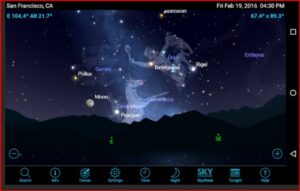Others are geared towards more experienced stargazers, providing advanced tools like telescope control, global coordinates, and more detailed information on deep sky objects.
For advanced users, these apps offer comprehensive databases of celestial objects, from stars and planets to distant galaxies and artificial satellites. With this wealth of information, stargazers can learn not only the names and locations of these objects but also their movements and historical significance.
Intuitive and Informative Interfaces
For beginners, stargazing apps simplify the often-overwhelming amount of astronomical data by offering intuitive and user-friendly interfaces. They provide descriptions and helpful tips on how to locate objects in the sky, making the learning process smoother.
Meanwhile, advanced users can quickly access the vital data they need without spending too much time navigating through the app, allowing them to focus on observing the stars.
Beyond the basics of our solar system, the best stargazing apps connect to large astronomical databases, offering users access to hundreds of thousands of stars, galaxies, nebulae, and more. This provides a richer, more immersive experience, allowing stargazers to track celestial objects in real-time and explore the far reaches of the universe.
SkySafari



